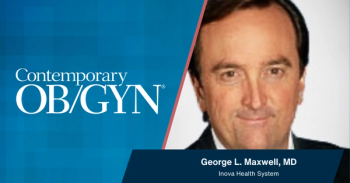
Late third-trimester ultrasound accurately predicts large for gestational age births
A new study confirms that estimating fetal weight with ultrasound between 35 to 38 weeks’ gestation strongly predicts large for gestational age births, helping guide clinical management decisions.
Identification and prediction of large for gestational age (LGA) at birth is strong from estimation of fetal weight through ultrasound in the late third trimester, according to a recent study published in the American Journal of Obstetrics & Gynecology.1
The risks of adverse maternal and neonatal outcomes are increased from LGA fetuses, with shoulder dystocia highlighted as the most severe complication. A trial has been conducted to determine the impact of early induction in LGA fetuses toward decreasing shoulder dystocia risk.2 However, definitions of LGA and macrosomia vary based on the criteria used.1
LGA defined by a customized standard has been reported with a stronger link to LGA-related adverse outcomes. According to investigators, “an essential element for the success of a management trial of LGA pregnancies is the correct identification of participants.”
The study was conducted to quantify the capability of current established practices for identifying pregnancies at risk of LGA or macrosomia adverse outcomes. The Perinatal Episode Electronic Record register was assessed for relevant data. This includes maternal and pregnancy characteristics, complications, and outcomes and ultrasound scan details.
Pregnant patients with at least 1 ultrasound scan-based estimated fetal weight (EFW) from 35 to 38 weeks’ gestation were included in the analysis. The latest scan was assessed for patients with more than 1 scan performed during the study period.
Exclusion criteria included multifetal pregnancies, missing anomalies, and missing a critical variable. Formulas programmed into the ultrasound scan machines were used to determine most EFWs.
An EFW above the 90th customized percentile was used to define LGA. This was based on criteria that excluded pathologic factors and adjusted for maternal height, early pregnancy weight, and parity and ethnic origin to improve accuracy.
There were 26,527 pregnancies with a median length of 276 days and average interval between the final ultrasound scan and delivery of 20 days included in the final analysis. A risk factor identified in early pregnancy for fetal growth restriction was the most common reason for receiving a scan at 31%.
Small for gestational age was reported in 19.9% of infants, highlighting the fact the cohort received 1 or more scan EFW. Suspected LGA was reported as the indication for ultrasound scan in 3.6% of pregnancies.
A detection rate of 65.1% was reported for LGA, with a false positive (FP) rate of 8.6%. LGA was suggested in 3556 fetuses, 1459 of which were LGA at birth. This indicated a positive predictive value (PPV) of 41% and a diagnostic odds ratio (DOR) of 19.7.
LGA births were reported in 32.1% of the population with suspected LGA as a primary indication for ultrasound scan. LGA was identified by antenatal scan in 77.1% of this group, indicating a PPV of 50.3% and a DOR of 6. Specificity was low with an FP rate of 36% and low positive likelihood ratio of 2.1.
When repeating the analysis for EFW over the 90th percentile, the LGA rate at birth was 9.7%, with 40.9% detected antenatally. A PPV of 47.3% was reported, increasing to 59.3% in women undergoing a scan for suspected LGA.
These results indicated a strong ability to detect LGA birthweight from ultrasound estimation of fetal weight in the late third trimester. Investigators concluded “the results of this study emphasize the importance of providing comprehensive information when discussing the potential benefits and disadvantages of different management options.”
References
- Ewington LJ, Hugh O, Butler E, et al. Accuracy of antenatal ultrasound in predicting large-for-gestational-age babies: population-based cohort study. Am J Obstet Gynecol. 2025;232:210.e1-10. doi:10.1016/j.ajog.2024.04.052
- Big Baby trial: induction of labour for predicted macrosomia. Warwick Clinical Trials Unit. 2018. Accessed February 14, 2025.
https://warwick.ac.uk/fac/sci/med/research/ctu/trials/bigbaby/
Newsletter
Get the latest clinical updates, case studies, and expert commentary in obstetric and gynecologic care. Sign up now to stay informed.










